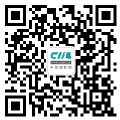On October 1, 2025, a research team from the Center for Advanced Innovation in Design of Materials (CAID) at Xi'an Jiaotong University published a groundbreaking study in Nature Materials, titled "Amorphous Phase Change Memory Materials without Resistance Drift." Phase change memory (PCM) relies on the resistance contrast between the amorphous and crystalline states of chalcogenide compounds to store data. However, conventional materials—such as the widely used germanium-antimony-tellurium (GST) alloy—suffer from a gradual drift in the amorphous phase's resistance over time. This drift undermines the precision of multi-level programming and restricts their suitability for edge computing applications, where stability is crucial. Through atomic-scale mechanistic studies, the researchers identified that resistance drift stems from the spatiotemporal evolution of local structural defect densities and Peierls distortions within the amorphous phase. Leveraging this insight, the team engineered a chromium-tellurium amorphous alloy, CrTe3, characterized by a flawless octahedral local structure. This design minimizes structural relaxation, preventing band alterations and effectively eliminating resistance drift. Experimental validation demonstrated that CrTe3 thin films exhibit no resistance drift across a broad temperature range (-200°C to 165°C) and maintain stable device performance after 100,000 operational cycles. Furthermore, the team achieved multi-level storage through optically controlled electrical measurements and developed an intelligent micro-vehicle powered by a CrTe3 array. Impressively, the vehicle's automatic addressing function remained fully reproducible even after one hour of operation at 150°C. This breakthrough positions CrTe3 as a pivotal material for high-precision phase change neuromorphic devices, which mimic the brain's computational efficiency. The study's first authors are Dr. Wang Xiaozhe, Dr. Wang Ruobing, and Dr. Sun Suyang, with corresponding authors Professor Wang Jiangjing, Professor Ma En, and Professor Zhang Wei. Xi'an Jiaotong University is the sole corresponding author institution. Paper link: https://www.nature.com/articles/s41563-025-02361-0

-
 C114 Communication Network
C114 Communication Network -
 Communication Home
Communication Home


